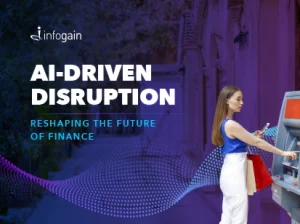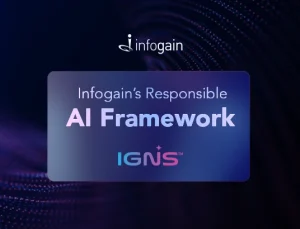- Posted on : June 19, 2023
-
- Industry : Corporate
- Type: Blog

Companies with disparate interfaces are facing major challenges. Organizations that have grown inorganically can’t count on intuitive and integrated dashboards to read and reconcile information. These stumbling blocks may prevent them from efficiently processing their services, satisfying their customers, and retaining brand loyalty.
Infogain’s billion-dollar home services client is one example. The company is a one-stop solution for home maintenance services with 31 brands under its umbrella. Focused on inorganic growth strategies, the company made headway by acquiring businesses with distinct and varied services. Each home service brand used unique applications to manage their business. Each acquired company brought in their own systems and technology stack and worked in silos, adding to their repository of overgrown systems. Over time, the company encountered these obstacles:
- No visibility into customer requirements and behaviors
- No central repository for where data is collected and stored
- Inefficient channeling of customers’ service requests
- Repeated, redundant information requests to customers every time they requested a different service
Our client wanted a united system for all the brands. A single repository that would provide a holistic overview of customers’ demands, needs and aspirations. And importantly, one where customers would have to enter their information once, before seamlessly transferring between services. The solution needed to be intuitive, user-friendly, efficient, and quick.
Infogain was engaged as a preferred partner to assist them in migrating their disparate services using cloud-centric principles. Infogain’s cloud-first strategy used AWS to address challenges and the SAFe methodology for empowered delivery teamwork.
Data Migration
All of our client’s vast historical data was migrated from SQL to a common platform on Postgres. The process was delicate and for it to seamlessly take place, an elaborate discovery phase was initiated. We recognized that the flow of information moved through several points:
- The customer visiting the website.
- Engaging a contractor or technician though an app.
- Passing along critical location and task detail through the app.
- Signoff of the completed work.
A Robust Architecture
Infogain implemented a microservices architecture, including Kubernetes and a React JS frontend coupled with a .NET core microservices backend. Each feature was built in a container to suit the client’s needs. This containerized way of executing the application had the advantage of turning off any module at any point while the rest of the application continued running.
There was no inter-dependency between the modules. This enhanced fault isolation, scalability, easy deployment, reusability across different business areas, and better data security, while allowing developers the ability to experiment.
The complete ecosystem consisted of both a mobile and web application. The mobile app was created using React Native, which doesn’t require multiple languages for Android and iOS versions.
Other technologies implemented by Infogain:
- GbBIS for defining sales territories, planning delivery routes, profiling customers, identifying new markets, and geo-coding locations.
- Amazon Pinpoint for engaging with customers across multiple messaging channels.
- HERE WeGo maps for mapping brand franchises.
- Quickbooks Online (QBO) for accounting
Safeguarding & Monitoring
Prevention of data loss was a critical component. Our client didn’t want to lose any data during the migration procedure. A dead letter queue (DLQ) mechanism was put in place to ensure this would not occur even when internet connectivity failed or there was a backend service issue. Infogain established dashboards and continuous, 24x7 monitoring techniques that would send alerts in case of any malfunction. Datadog by AWS was deployed to monitor the application and infrastructure. This resulted in less “noise” with pertinent alerts. These innovations allowed for proactive monitoring during the migration process.
Infogain further ensured security by using DevSecOps tools such as Zap, Checkmarx, and Sonar Security Analyzer.
Benefits of the Cloud-first Systems' Transformation
Our client realized tremendous benefits from the transformations of its systems:
- It gained control over its data and had a holistic view of its customers and their needs.
- It had a robust technology framework which could handle service requests with ease, including these benefits:
- Data accessible anywhere, anytime due to its location in the cloud
- Greater scalability and agility with enhanced security
- Upgraded customer experience due to a smooth new service flow
- Easy-to-use mobile and laptop applications
Infogain can help your company take a similar path. We can make your journey to the cloud smooth, offering the expertise to scale, secure, and optimize according to your specific business requirements.
If you want our team of experts to help you jump start your cloud journey, contact us.
Note: This blog is a contribution from Infogain Poland team.







